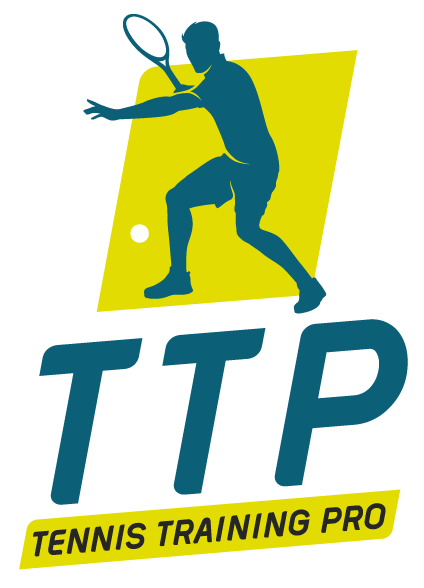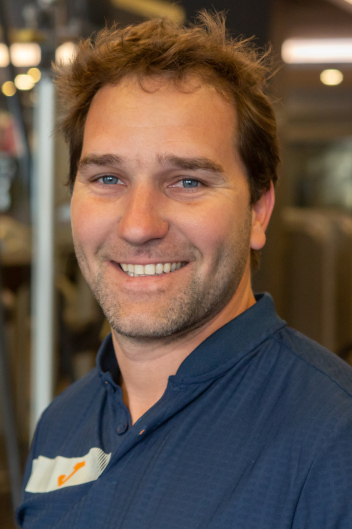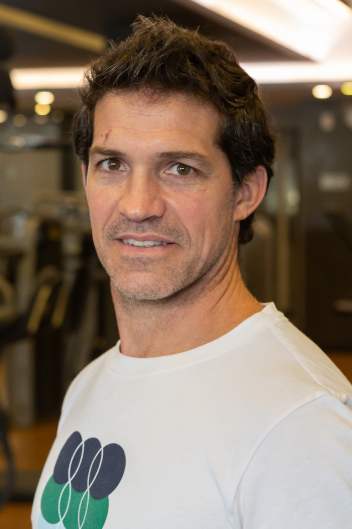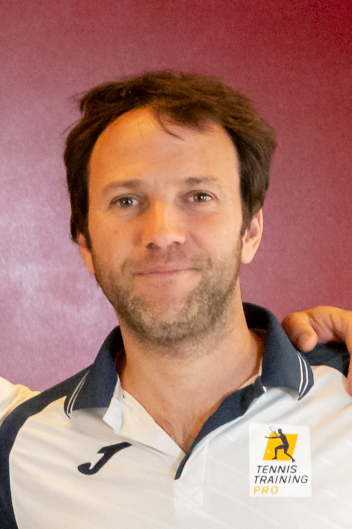How to warm up for tennis
31 de March, 2020
Written by: Esteban García Giménez
Before doing physical activity, we have to get our bodies ready for the effort. The main goal of a warm-up is to activate the muscular, facial, articular, cardio-respiratory systems, and all the other systems.
An efficient warm-up can, among other things:
- Increase vasodilation, which raises the temperature of the tissues involved in the activity. For each degree Celcius your body temperature rises, your metabolism increases by 13%.
- Increase viscoelasticity of connective tissues.
- Enhance oxygen delivery and carbon dioxide release.
- Facilitate nerve-impulse transmissions.
- Improve joint mobility.
- Increase muscle tone of the main muscular groups involved in the exercise, specially the stabilizer muscles- fundamental for injury prevention.
Therefore, before playing tennis, we recommend doing a sport-specific warm-up. In our daily practice with professional players, we divide the warm-up session into three components that make it possible to achieve the goals we have already described:
- Joint mobility
- Activation of stabilizing muscles
- Cardio-respiratory activation
Joint Mobility
This is the first stage of a warm-up: a sequence of global dynamic exercises that combine flexion, extension, leaning and rotation in different planes of movement. The objective is to improve the joint range of motion (ROM) specific to the activity we will perform. It is important to flex and mobilize the main joints and muscle groups that are used in tennis. We have to work on different joints: the ankles, the hips, the lumbopelvic joint, the lumbar spinal column and the shoulder joint.
Below we can observe different mobility exercises performed by professional tennis player Thiago Monteiro -top 100 ATP ranking- before a match in the ATP 500 Rio Open. In this case, we can see a sequence of three combination exercises with different goals.
STEP 1: First, he mobilizes his hip to stretch the leg with the knee on the floor, tensioning the ligaments and the joint capsule- the passive elements of joint stability. Extension is mainly limited by the iliofemoral ligament. The hip flexors are also stretched in this position: the psoas, the sartorius, the rectus femoris, the tensor fasciae latae, also the accessory flexors: the pectineus, the adductor longus, the gracilis, and the anterior fibers: gluteus minimus and medius. While this movement is performed, an isometric contraction of the abdominal muscles must be maintained in order to avoid lumbar lordosis as a consequence of a stressed psoas.
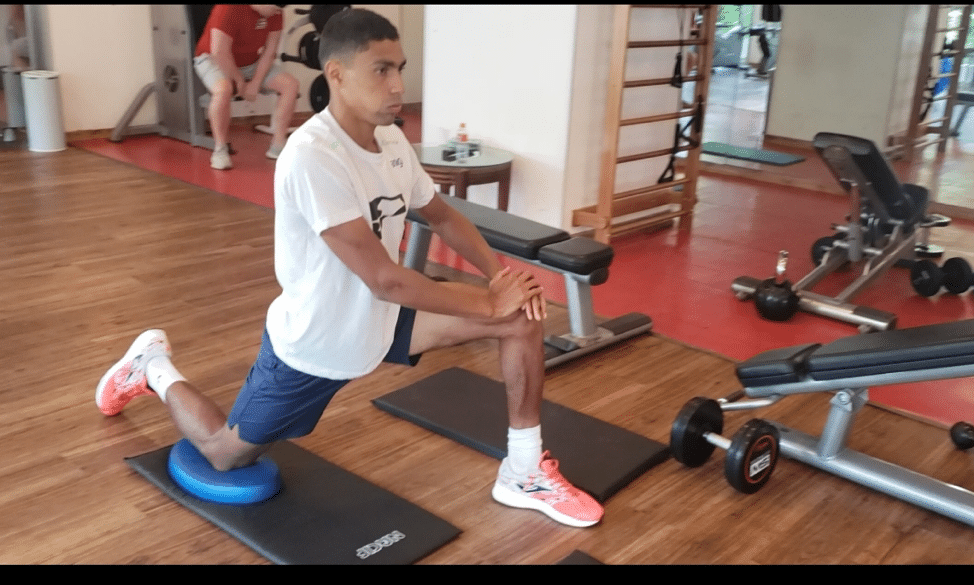
STEP 2: He extends his front leg and flexes his trunk forward. This way, the posterior muscles of the leg are stretched tensioning the soleus, the gemellus, the hamstrings, the magnus adductor and the gluteus maximus.
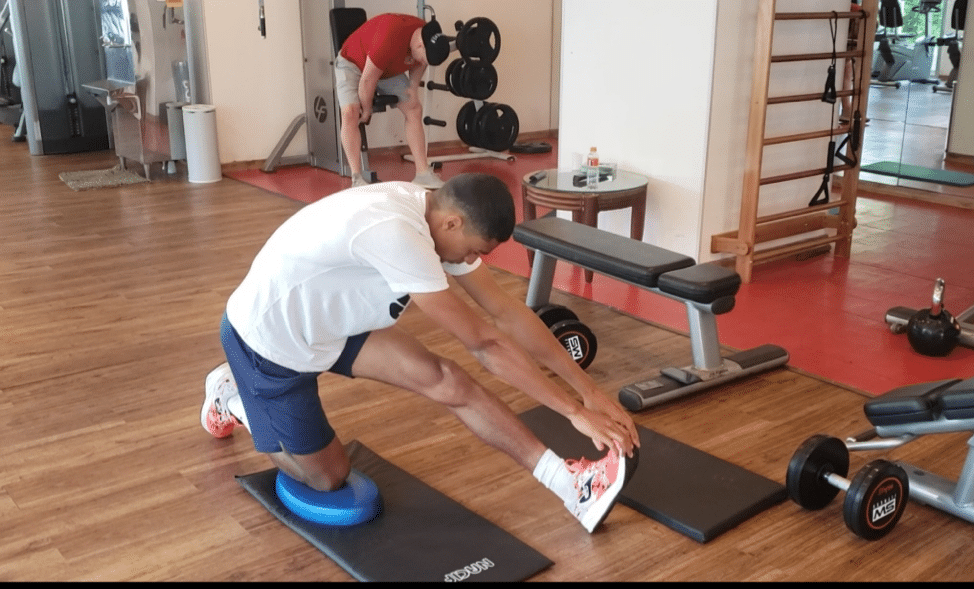
STEP 3: He grabs his front leg at the ankle with the opposite hand and tries to move the elbow towards the floor, rotating the homolateral shoulder. The main goal here is to tension the outer hip muscles: the gluteus maximus, the pyramidalis, the obturator internus and externus, and the geminus. As trunk rotation is performed, several muscles and ligaments are mobilized: the spinal erectors -the iliocostalis, the longissimus dorsi, the semispinalis cervicis, the transversospinalis and the multifidos in the spine that carry out homolateral rotation-, the latissimus dorsi and the minor serratus posterior inferior, as well as the external and internal oblique muscles. As for the joints, the hip joint capsule is mobilized and tensioned, especially its front part with the focus on the horizontal fibers: the iliolumbar, the sacrotuberous and sacrospinous ligaments, and the lumbar and dorsal spinal ligaments: the intertransversal, inter and supraspinous, and the intra-articular ligaments that attach the vertebrae to the ribs.
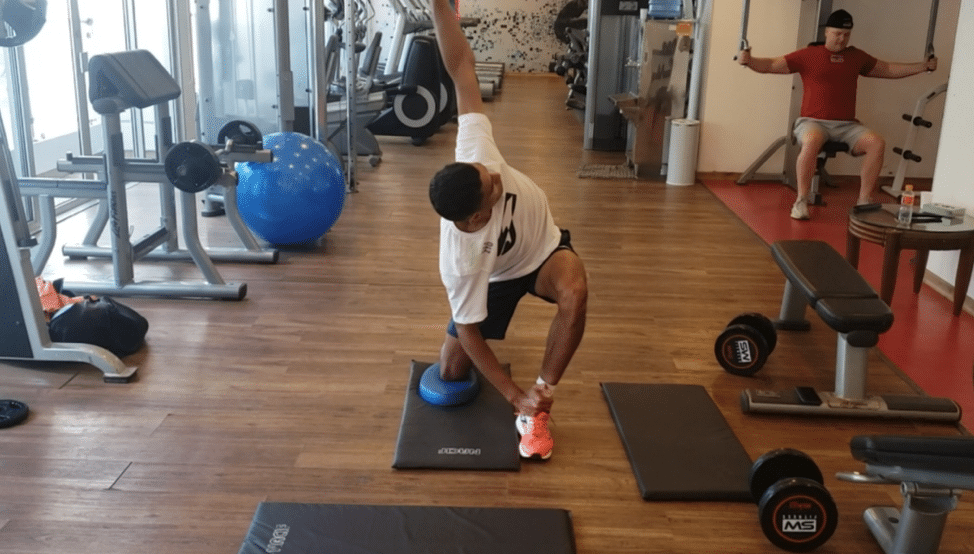
Activation of stabilizing muscles
Once we have finished the joint mobility exercises, we have to move on to muscle activation exercises. First, we have to activate the stabilizing muscles in the spine, hips and scapula so that all the joints are well positioned in order to perform every movement efficiently. The importance of this stems from the fact that stability sees the coordination of the neuromuscular system as a whole to provide a stable base to move on. Therefore we need both strength to hold a position and coordination to make adjustments while the distal aspect in a chain of movement performs the exercise. We have observed that our patients and certain high-performance sportsmen have musculoskeletal dysfunctions, usually accompanied by weakness in one of the components of the kinetic chain -especially in the stabilizing muscles- as a cause of inefficient stability. This results in excessive stress on some structures and increases the risk of injury.
Below, we will provide some examples of warm-up exercises we use in our daily practice.
Deep back muscles activation
In this example, you can see front planks on a stability ball with hip flexion. The main goal of this exercise is to activate the stabilizing muscles in the spine. This exercise requires isometric contraction of the transversus abdominis, the anterior rectus abdominis and the internal and external obliques. At the same time, the psoas and hip flexors are activated pulling the knees up while the bands placed in the arches of the feet add extra resistance. Both hips must be kept at the same level.
Scapular stabilizers activation:
The inferior trapezius and the rhomboid are in charge of stabilizing the scapula pulling it backwards towards the mid line. While we hold that position, we perform an external rotation of the glenohumeral joint ruled by the teres minor and the infraspinatus- two muscles that are part of a joint that plays a fundamental role in the biomechanics of the tennis shoulder: the rotator cuff.
Cardio-respiratory activation:
The first part is a series of global dynamic movements of 7 to 15 minutes to activate the aerobic system’s capacity- both the muscles and the cardio-respiratory system. These exercises involve low-intensity movements of major muscle groups and can be combined with general dynamic stretching exercises. After doing those exercises, we can perform jumps, rhythm changes, stops, starts, slides and different sprints.
The last part is a sport-specific warm-up for improving the coordination of different strokes. Some of these exercises mimic movements usually performed in match situations.
This causes an increase in breathing rates, heart rates and tissue temperature. At higher temperatures, hemoglobin and mioglobin unload oxygen faster and more efficiently, improving oxygen delivery to the tissues during the exercise, so the heart works more efficiently meeting the demands of the activity, improving blood flow to the tissues during the exercise, increasing oxygen consumption and enhancing gas exchange.
References:
- Ricard F., Sallé J.L. (2003) Tratado de osteopatía. 3 ed, Panamericana.
- Ricard, F. Medicina osteopatica y miembro superior, cintura escapular y hombro.
- Grosser, Bruggemann, & Zintl (1989). Alto rendimiento deportivo. Martinez Roca. España.
- Boyle, M. (2016). The New Functional Training for Sports. Second Edition. Human kinetics. USA.

 ES
ES EN
EN PT
PT